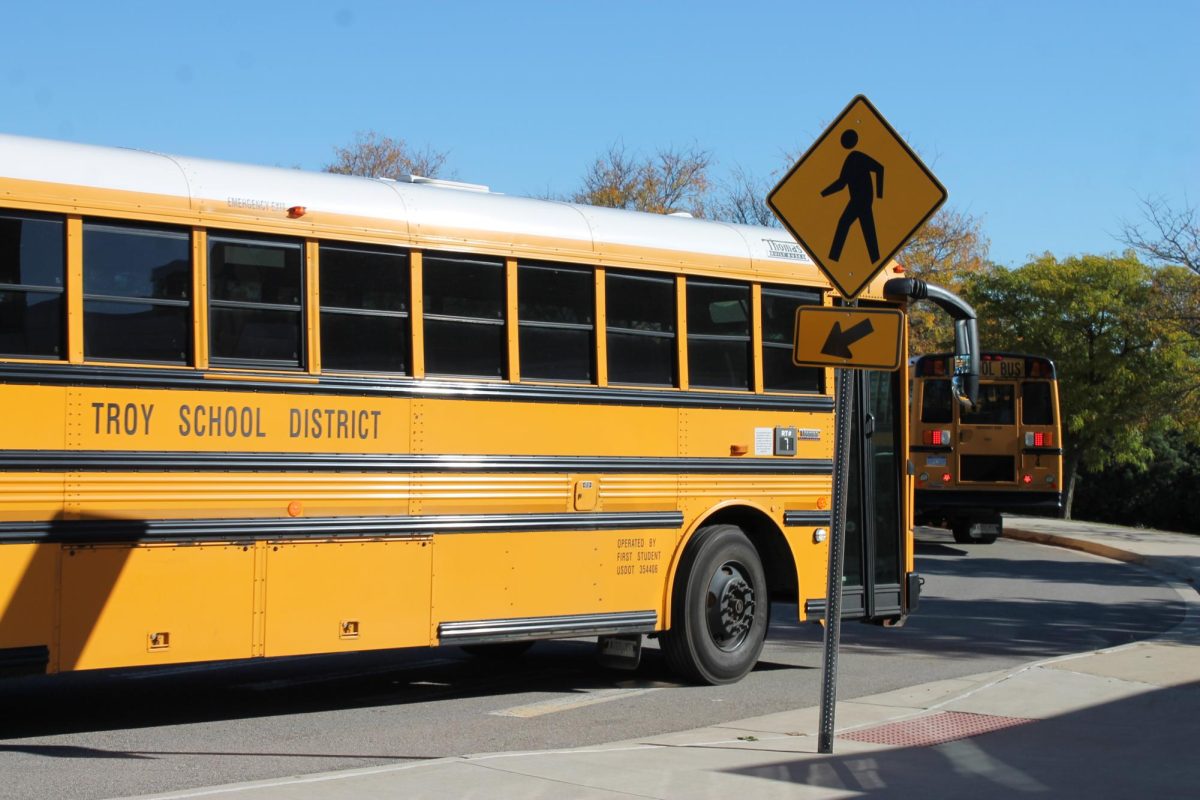As the typical Troy High School student navigates through the bustling hallways, they are forced to encounter an increasingly overwhelming environment even outside the building: the bus. With a student population exceeding 12,000 students, the Troy School District shares 32 general and 23 special education buses.
Kathy Kochanski, the district’s transportation director, has provided a basic understanding into these workings. “[Bus stops are] usually centrally located within that subdivision and where they’re at and the students are assigned to stops that are closest to their homes,” Kochanski says. However, there are no bus quotas or general regulations to prevent overcrowding. It’s important to note that students not only ride the buses they’re assigned to, but occasionally bounce between buses when traveling with friends.
Bus driver Lesile Ballard has picked up kids from different stops on various instances, “especially if the weather’s bad,” she claims. In the event of maximum capacity, passengers may be turned down and forced to make alternative arrangements. Although, ‘maximum capacity’ is loosely defined.
Samrudh Ponniah Maheswari, a junior at Troy High School mentions that every so often he shares a seat with three people: seats that typically fit only two students. “I do feel safe, but I feel uncomfortable [be]cause it’s too crowded and stuff so I just get down when the stop is close by and just walk from there. It’s better to walk instead of sitting in the bus, you know.” Even if students aren’t turned down prior to entering the bus, they often leave on their own in frustration of the overcrowding.
According to these students, overcrowding is only an issue in the afternoons, specifically Friday afternoons. Kochanski states that the longer afternoon bus rides have a duration of 32 minutes due to traffic, but a maximum of 25 minutes in the morning. Longer rides further contribute to the discomfort in a crowded bus, which doesn’t seem to pose an issue earlier in the day.
Despite this, numerous students have complained about facing miserable conditions. When asked about health hazards pertaining to smoking or vaping, a few students provided a definitive yes. Overcrowding presents a risky environment for these teenagers when there is smoke on the bus. Without proper ventilation, students involuntarily inhale this smoke and aren’t available to change seats or move around.
Are there any reasonable solutions to implement? Students have offered a variety of answers: providing bigger buses, providing larger buses or even distributing the students between buses more equally. No matter the solution, students are eagerly awaiting to limit the intensive crowding on the school’s buses.


